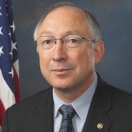
President Obama has challenged his Administration to make government work better for the American people, and to find ways to do more with less. Here at the Department of the Interior, we are proud to play a lead role in helping meet the President’s charge.
Today, we are announcing our strategic plan as part of the largest information technology (IT) reform in the federal government. Through this plan, we are making smart changes to IT services across the Department that will make our IT more cost-effective and customer-friendly while saving taxpayers half a billion dollars over the next decade.
Some of the common-sense reforms we are undertaking include:
- Reducing the number of data centers and servers within the Department by up to 50 percent
- Moving to a single email system at half the current cost
- Moving to the cloud, with a cloud-based electronic forms system and cloud-based electronic records, documents and content management solutions.
The IT Transformation Strategic Plan we are announcing today is part of our effort to reduce spending and get our nation’s fiscal house in order. In the last year, we at the Department of the Interior have also cut our contracting expenses by more than a quarter of a billion dollars. On top of that, we have cut back on administrative expenses by nearly a hundred million dollars in the last year, and we’re going to cut another hundred million dollars in the coming year.
We are making these cuts – smart cuts – so that we can make the type of investments our nation needs to win the future, from the new energy frontier to the national parks and public lands that are economic engines for local communities.


